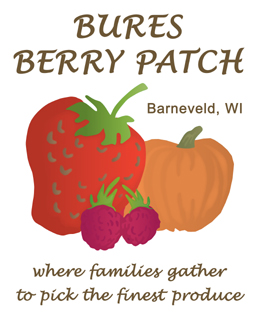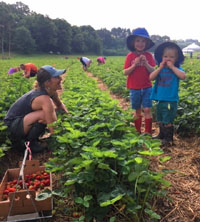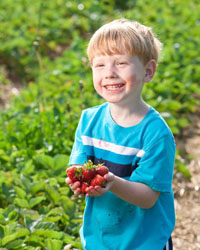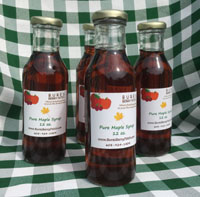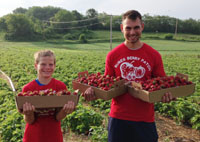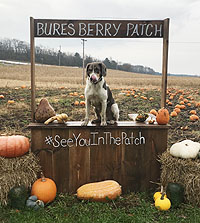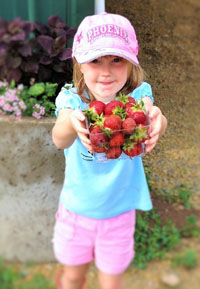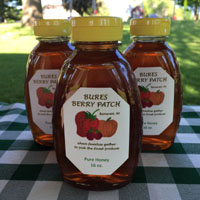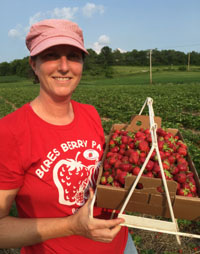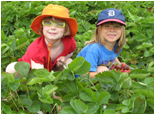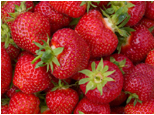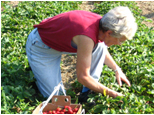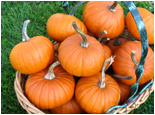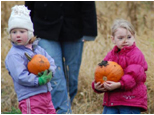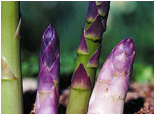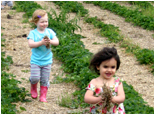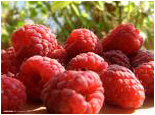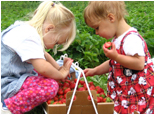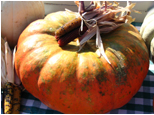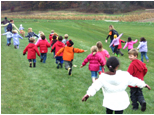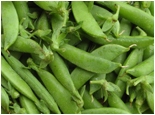Growing Strawberries
Site Selection
Choose an area that is free of perennial weeds. This area should also have full sun throughout the day. Strawberries also do best in a sandy loam soil. If you do not have this type of soil, just find a well-drained area to plant. The soil should be prepared with 10 to 15 pounds of a starter fertilizer per 1000 square feet.
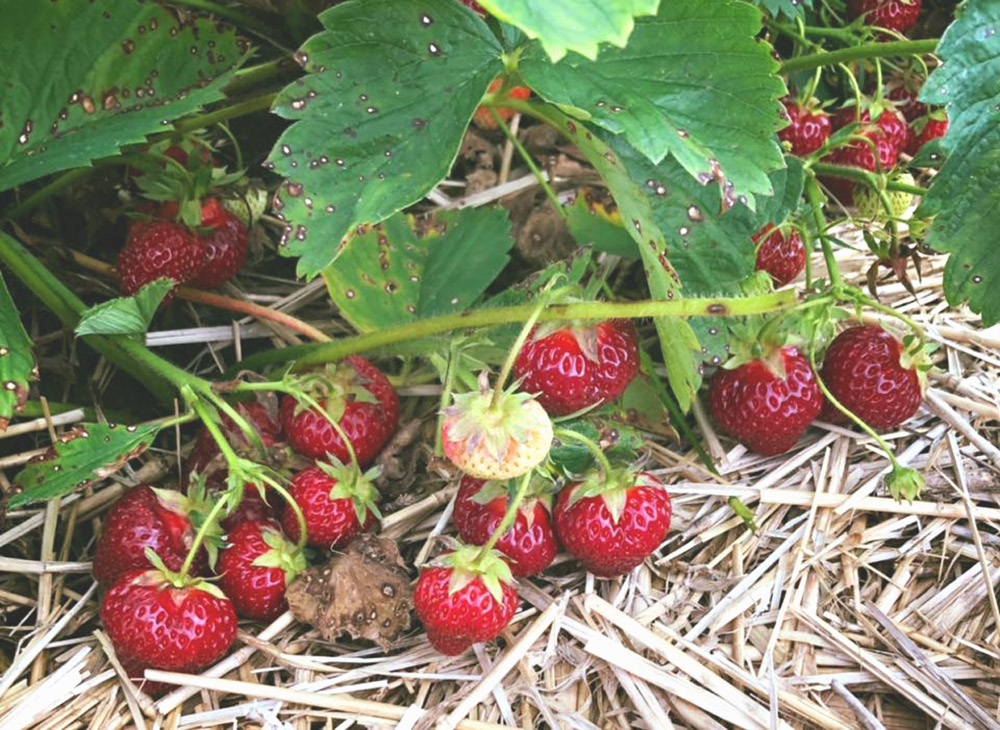
YEAR 1
Spring Planting
Strawberries should be planted around the 1st of May, or as soon as the soil can be worked. This gives the plants plenty of growing season to get established beds. Just prior to planting, soak the roots in water for up to 1 hour. This gives the plants the added moisture they need before they are planted. Plant so the tip of the crown (the part of the plant from which the leaves and roots grow) is just above the ground level. The hole should be deep enough so the roots can spread out. Pack the soil firmly around the roots and crown. Space plants 18 inches apart within the row and about 3.5 feet apart between rows. Water the area around your plants right after planting and continue to do so for the following 2 weeks.
Summer Tasks
June bearing strawberries will begin to flower as the weather warms, in Southern Wisconsin around May 15th. In your first year, remove the entire flower cluster. This encourages better plant establishment and runner production, increasing fruit yield. Once the flowers have been picked, the plants will begin to runner. Try to keep the runners within the row and maintain a row width of a maximum 18 inches. Too wide a row may decrease your fruit size while increasing disease and insect pressure. Also, to promote runnering and plant growth, apply one to two pounds of a high nitrogen fertilizer (46-0-0) per 100 feet of row in mid-June. An additional application of nitrogen should be made in early August. Be sure to water plants after each fertilizer application to dissolve the fertilizer and wash it off the leaves of your plants.
Common Pests
- Robins – Those pretty birds are notorious for pecking holes in fruit. For a home garden, we suggest using a netting to protect your precious produce.
- Diseases and Insects – These problems are mainly related to weather, which we’ve found to be pretty hard to control. However, these issues can be minimized by site preparation and maintenance. Remember, you want to choose a
well-drained location for your bed. In addition, mulching helps to prevent raindrops from splashing up on the plants and thereby spreading diseases. - Weeds – CONTROL THEM! These invaders are prime reasons for insect and disease problems.
Weed Control
- Mechanical – Shallow cultivation and hoeing get the weeds when they are small. Mulch: Apply fine mulch. We use straw, 2 to 3 inches deep over the soil between the rows. This also reduces disease, fruit rot, and insect pressure.
- Herbicides – Several herbicides are registered for use on strawberries. Weed preventer (Dacthal) is probably the safest, most common, and effective. Use it according to directions on the label.
Fall Duties
Soil test in the fall to determine phosphorus (P) and potassium (K) needs. Apply the needed amounts of P and K before you mulch.
Winter Care
In late November or early December when temperatures are approaching 15°F, plants should be covered with a 4-6 inch layer of mulch; again we use straw but make sure it is free of weed seed.
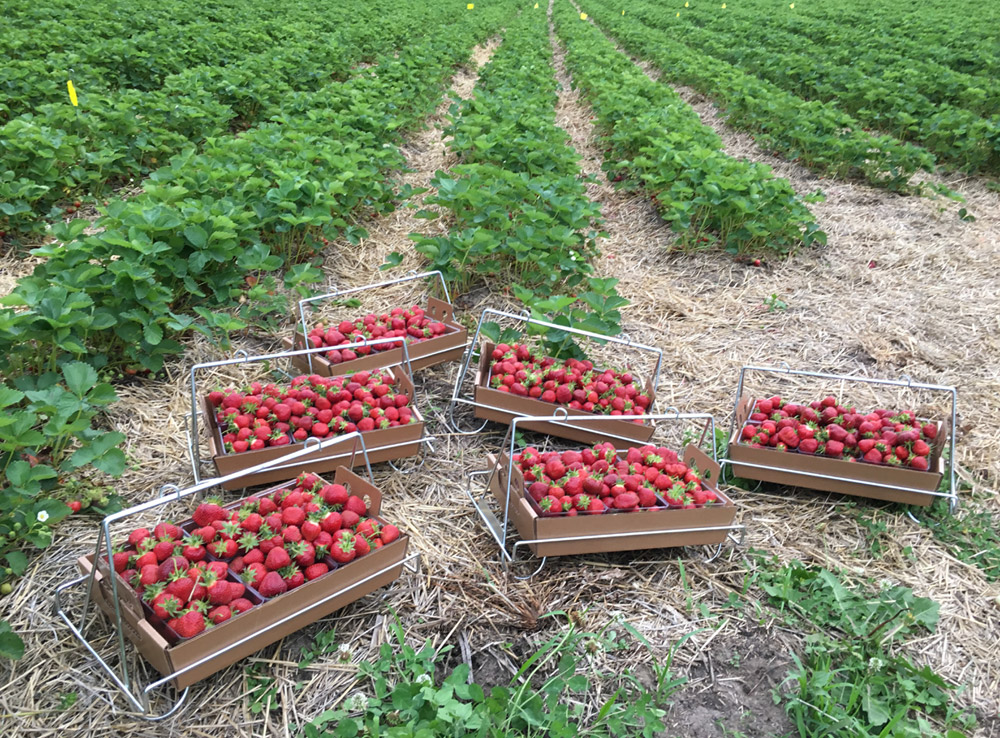
YEAR 2
Springtime
In early April, when the plants are beginning to grow under the mulch, you should uncover your plants and place the mulch between your rows of plants. This mulch will conserve the plants’ moisture and keep your weed pressure down.,/p>
After Picking
Once your strawberries have been picked, we suggest mowing off all the foliage. In addition, you should roto-till your plants back to a maximum row width of 10 inches. This process is called renovation and it will give your new runners room to establish. Also at this time, you should apply nitrogen to help those runners set. Again, you should also apply nitrogen in early to mid August.
We hope you enjoy your strawberries and if you need more, come out and visit us. You may learn even more about your strawberry plan.

